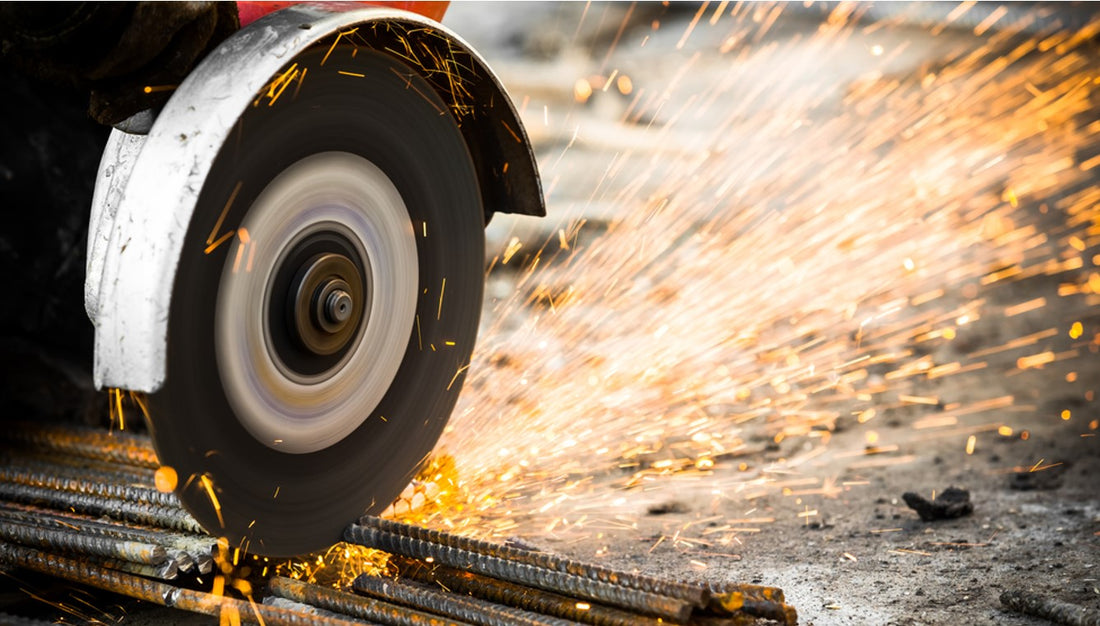Introduction to Cut-Off Wheels for Dremel
Dremel tools are primarily rotary implements that serve various uses and purposes. These include carving, engraving, sharpening, grinding, cleaning, and more. Dremel does have a slew of other products, including glue guns, power screwdrivers, and many others, that you can find on their website.
The purpose of a cut-off wheel (alternately known as a cutting wheel) for a Dremel rotary tool is to make the process of cutting bolts or screws easy or make slots in these materials that are stripped or rusted, to remove them with a screwdriver. They allow you to slice and cut metal – even hardened steel.
Choosing the Right Cut-Off Wheel for Your Dremel
There are several different types of cutoff wheels. We describe their differences below.
Thin vs. Thick
Thin cut-off wheels have, as you might expect, thinner blades. Thinner blades are advantageous for cutting because they incise the metal with more fine-tuned precision. Thicker blades have more overall “brute strength,” but can be less precise.
Abrasive vs. Diamond
An abrasive cutting wheel is also known as a fiber or a bonded cutting wheel with metal fibers all over it for rougher jobs. You can use different grain materials for these metallic, fibrous wheels.
Diamond cutting wheels are metal coated with diamonds. As you can imagine, diamonds slice through the material with an alarming degree of sharpness and precision, which is why they work well for finer jobs.
Factors to Consider when Selecting a Cutting Wheel
You need to take stock of several key considerations before selecting the proper cutting wheel for its job.
Firstly, it’s essential to consider the material the wheel will be cutting. Abrasive cutting wheels work best for metal pipes, rods, and sheets. Diamond cutting works best for jobs where you wouldn’t want to produce much dust, which is relevant if the work conditions require less dust to be present in the workplace.
Diamond-cutting wheels will also work better with finer jobs requiring more precision. For steel materials, a ceramic cutting wheel might even do the job best. These are high-tensile and extra-sharp, which are highly conducive to cutting harder steel.
In terms of thin vs. thick cutting wheels, thinner wheels will remove a less material than thick ones, so it’s best to choose the thinnest possible wheel for the job.

Using Your Cutting Wheel Properly
With instruments as sharp as these, you must heed safety precautions to avoid injuring yourself or polluting the work environment with toxins or small particulate matter that can harm others.
It is essential that you wear safety glasses with goggles and a face shield. It’s also highly advisable to wear a dust mask and gloves.
In terms of best practices for using cutting wheels, we recommend the following:
- Do a safety check of the wheel before starting the job to make sure it is in good working order.
- Check the maximum operating speed and whether the cutting disc is the right size for your power tool.
- Ensure that the cutting wheel is appropriate for the material you’ll be cutting.
- Make sure portable cutting wheels are mounted on grinders with the right guards and flanges.
- Conduct a test run.
- Make sure the workplace is conducive to and safe for the job.
- Position the wheel guard between the operator and the cutting wheel.
- When you’re ready for the job, maintain a 90-degree angle. Use moderation and consistency when feeding material to the wheel.
- Keep everything on your person clear of the wheel while it is cutting.
- Check to make sure particulate matter isn’t spewing all over the place.
- Maintain a vigilant awareness of your surroundings to protect yourself and others.
- Follow all additional OSHA standard safety precautions.
To properly maintain cutting wheels, you can dress your wheel, handle and store them with care, and clean them.

FAQs
What is the maximum RPM for an operant Dremel cutting wheel?
The maximum operating speed is 15,000 RPM. It is advisable to start with a lower RPM and work up to a faster speed without exceeding the maximum cutting speed. Keep the rotations between 10,000 and 15,000 RPMs.
How long does a cutting wheel last?
Use your cutting wheel within two years of its purchase. When the wheel gets too small to safely and effectively make the cut, it should be replaced.
Can I use a cutting wheel to cut metal?
Yes, absolutely. These tools are designed to cut through metal quickly and precisely. You can use them with metals such as copper, aluminum, and cast iron. They can also be used to make small cuts in plastic and brick.

